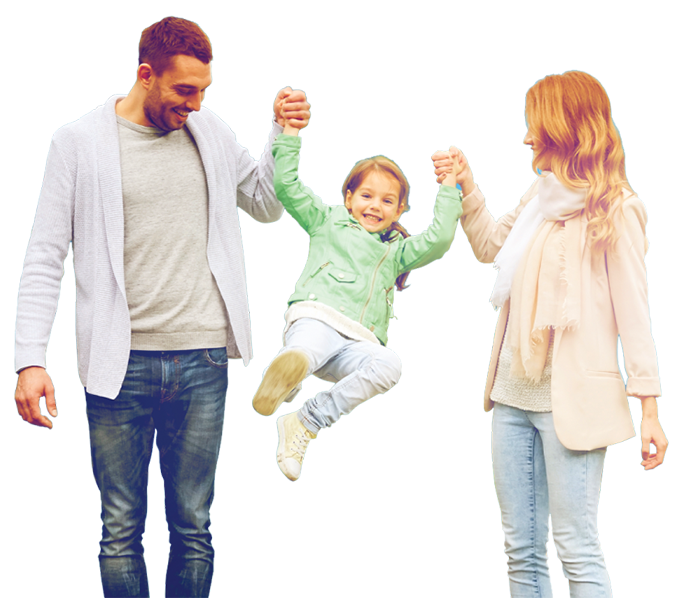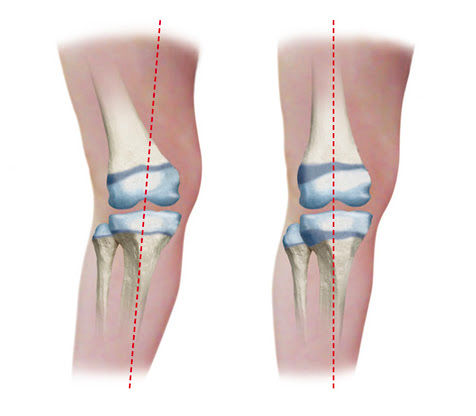Angular malalignments of long bones are a common concern in the early years of life. In most cases, symmetrical deformities and absence of symptoms present a benign condition with excellent long-term outcome.
On the contrary, deformities that are asymmetrical and associated with symptoms may indicate a serious underlying cause leading to aesthetic and functional deficits that will require surgical orthopedic treatment.
At what age can angular deformity of bones be considered a pathology?
Genu varum (bowlegs) are normal in newborn and infants up to 12 months. It improves with growth: when child starts standing and walking the lower limbs gradually straighten (with normal growth) and the genu valgum spontaneously correct at the age of 7. If they persist after the age of 10, they may require surgical orthopedic treatment.
Angular deformity causes
Some experts think that a high amount of stress and strain imposed too early on a joint, during growth and/or adolescence (for example, through intensive sport practice) may contribute to this type of growth deformity, but so far not enough scientific data is available. However, it’s known that the most frequent causes of angular deformity of long bones in children are growth disorder, previous trauma or injuries, cancer and/or infections, or a pathologic condition – often caused by Blount’s Disease (tibia vara) and renal rickets, or vitamin D deficiency.
Angular deformity diagnosis
Familiarity with the natural history of angular deformities and with normal growth patterns is necessary to diagnose and evaluate malalignment. Diagnosis should include family history, any description of onset and information about the progression of the bone deformity, plus a selective use of X-rays, CT and MR imaging. The child will be observed walking, with attention to her/his knees during the stance phase, to determine if lateral thrust (genu varum) or medial thrust (genu valgum) occurs. The doctor should know the diet and amount of vitamins taken by the child, inquire about milk allergy, or intoxication of metal – specifically to lead and fluoride.
Angular deformity treatment options
Treatment options depend mainly on the degree of bone deformity and the age of the child. Treatment is rarely required if the child is under 18 months. In case of moderate, milder deformity (stage I and II), this can be treated with a night time orthosis, and/or a day time brace, which can be effective up to the age of three years.
All children with significant angular deformity (stage III-V) should be considered for orthopedic surgery by osteotomy with an internal and/or external fixation device. If performed at an early stage, the surgeon will usually obtain complete and permanent correction of the child’s limb deformity, whereas there is a greater chance for recurrence if osteotomy is done in later years.
Possible post-surgical complications
Bone lengthening and deformity correction can come with a few possible complications. The most common are the following:
- infection – for instance, with an external fixation device it may occur at the pin and wire sites (which must be constantly cleaned for prevention), or in the bone (which is extremely rare);
- delayed or too fast bone healing;
- implant related complications;
- nerve or blood vessel injuries;
- muscle stiffness and joint contracture;
- bent or broken bones;
- blood clots in the leg;
- allergies to some medications, or anesthesia.
Ask your doctor or orthopedic surgeon to explain all the possible post-surgical complications and how they can be prevented. Do not hesitate to contact her/him whenever you have any doubts or questions.
What can happen if a bone deformity is not corrected in time?
If left untreated, or not treated in time, bone deformity can deteriorate with age and lead to major complications. While growing, your child will gain weight, which adds extra stress to his/her joints. The bone deformity can become permanent and in time your child can develop osteoporosis, with further reduction of the mobility and more fragile bones. There can also be increased severe functional and aesthetic problems, nerve damage and pain.
Ask your doctor or surgeon to explain all the possible complications if your child’s bone deformity is left untreated. Contact her/him for any doubt or question you may have.
 Share on facebook
Share on facebook
 Share on twitter
Share on twitter
 Share on linkedin
Share on linkedin
 Share on email
Share on email

